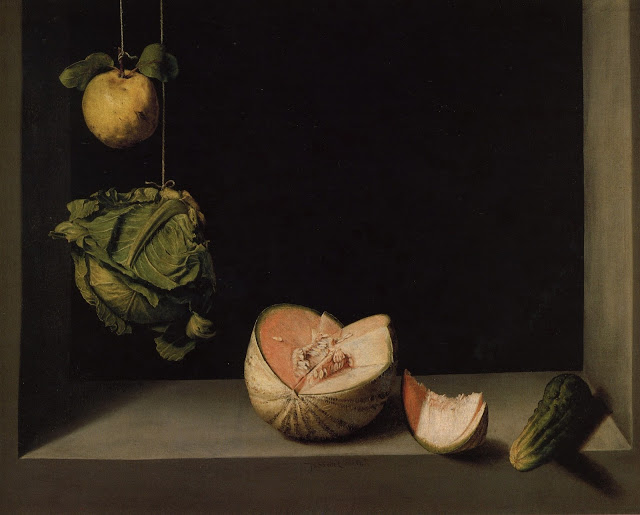I always like the idea of mince pies but in recent years have steered away from shop bought samples. Too much pastry, too sweet, generally too much of what you don't want and not enough of what you do - a rich fruity spicy filling with melt in your mouth pastry. A reason for never making my own was a slight aversion to suet and lard - saturated animal fats in my pastries is not an altogether attractive prospect and vegetable suet is not an everyday ingredient. Thankfully my local health food shop, Coopers on Lower Marsh, had the foresight to stock up on it ready for the onslaught of seasonal culinary delights. So no more excuse.
At times like this Delia usually seems the best place to start - like asking mum. My battered copy of Delia Smith's Complete Cookery Course is the 1995 version - and 36th print edition since it was first published in 1978, and who knows how many more since? But one thing is certain that there are a lot of people out there looking to Delia for advice. Her recipes are no nonsense and usually deliver - especially on the baking front. Her interview in the Guardian this weekend struck a chord. When asked: If you could bring something extinct back to life, what would you choose? Restaurants that are run by real cooks serving real food, and not what Elizabeth David called "theatre on a plate".
Well said. I like to think of the theatre as taking place in my mouth - food that has been so finically fingered to produce a fine dining version of a meal is a spectacle to behold not an everyday occurrence. Fashion dictates that this is the model we should all be aspiring towards unless of course you are Giorgio Locatelli trying to find a new angle for your cooking - so hey la cucina povera and Sicilian Cooking, but that's another thought.
Getting back to mince pies. Delia's recipe makes 2.75kg of mincemeat - I thought this was a lot until I started eating them and now can see another batch being made before the festive season even begins! I think the real secret is rolling your pastry really, really thin and putting as much mincemeat as you can without them overspilling! So with Delia's recipe as the start point this is my version and its called Twelve to one Mince Pies because literally as soon as you make them they all get gobbled up - this little fellow only survived as he was requisitioned for modelling duties!
Mincemeat
I like my mincemeat - well minced really, so that means a little more work and chopping up all the dried fruit. I also like almonds so I've added extra but as with all recipes adapt to your own taste.
225g vegetable suet
350g raisins - rinsed and chopped
225g sultanas - rinsed and chopped
225g currants - rinsed and chopped
225g mixed candid peel chopped
350g muscavado sugar
2 unwaxed oranges zest and juice
2 unwaxed lemons zest and juice
125g toasted almond flakes
4 teaspoons ground mixed spice
1/2 teaspoon ground cinnamon
1/2 whole nutmeg grated
450g Bramley apples - peeled, cored and finely chopped
6 tablespoons brandy - Calvados if you have it
So all you have to do is mix up very well all the ingredients - excluding the brandy, in a large bowl. Cover with a clean tea towel and leave for 12 hours for all the flavours to meld in together. Then transfer to a large baking tin, cover loosely with foil and place in the oven at 120 Celsius for 3 hours. As Delia says 'this process slowly melts the suet which coats the other ingredients, and prevents fermentation taking place if too much juice seeps from the apples during storage.' Allow to cool, then stir in the brandy and spoon into sterilised jars and seal.
Mince pies
This makes enough pastry for 36 mince pies but you can divide it in 3 and keep in the fridge then just make up as and when you like/need/fancy!
Shortcrust pastry
350g plain flour
350g plain flour
150g unsalted fridge cold butter, diced into small cubes
pinch of salt
cold water to mix
Homemade mincemeat
Milk/water
Make the pastry by rubbing the butter into the flour and salt in a large mixing bowl. Easy in a food processor but if doing by hand just make sure that you don't over work the pastry - minimal rubbing in - so it looks like large breadcrumbs. Then add cold water a little at a time - just enough to bring the pastry together - I pour the mixture onto a length of cling film and draw it altogether into a tight ball, that way avoiding manhandling the pastry too much and then pop it in the fridge for minimum half an hour.
For 12 mince pies roll out a third of the pastry as thin as possible and cut 24 rounds - pastry cutters are good or a glass the right size is fine also. Lightly grease a baking tray - line with pastry, fill with as much mincemeat as you dare. Dampen the circumference of the remaining rounds and press firmly to seal the edges. Brush with milk and make 3 snips with a pair of scissors in each pie.
Cook near top of oven for 18 minutes or until they are golden brown. Cool on a wire tray and then dust with icing sugar.




